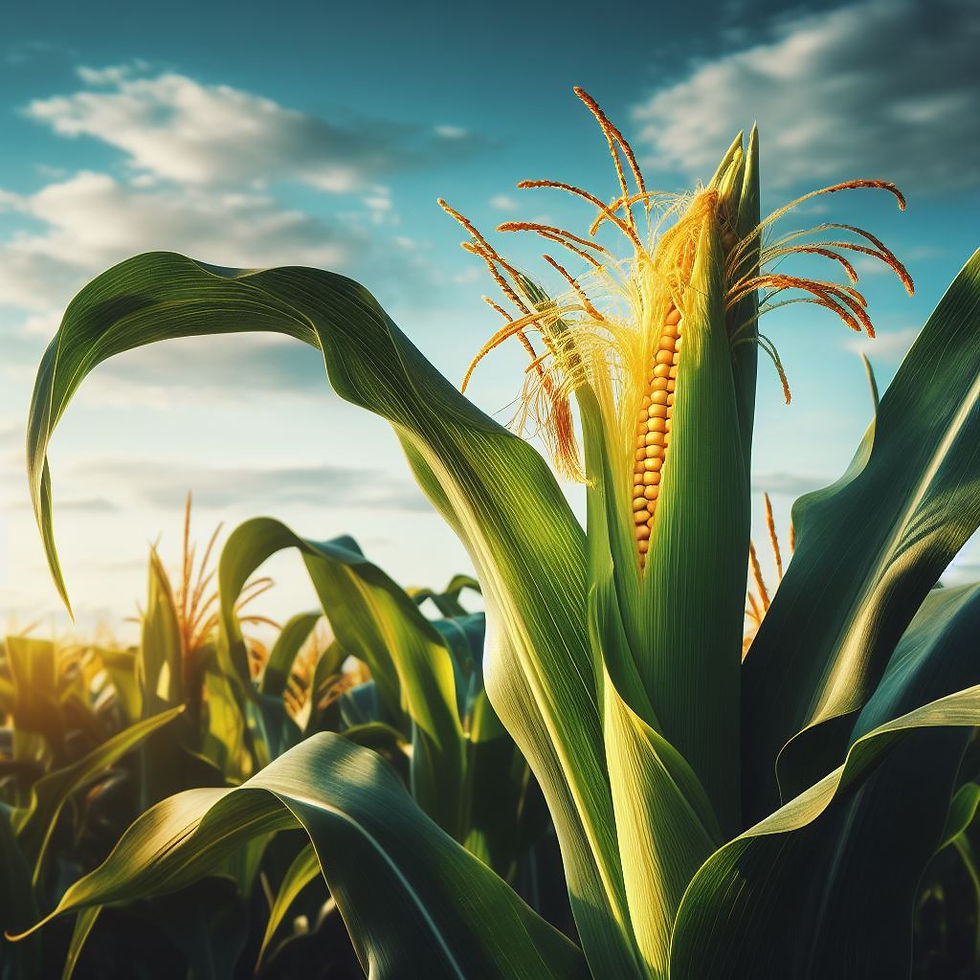The black bean, corn, and squash diet of Costa Rica
- Admin
- Nov 22, 2023
- 4 min read
Updated: Aug 10, 2024
 What is CORN?
Identification name: Zea mays L.
Family: Poaceae
Habitat: native to Mexico
Medicinal parts: silk
Key chemical constituents: it contains amines, fixed oils, saponins, tannins, phytosterols, gum, resin, pigments, vitamins. Specifically, oleic acid that is antioxidant; sitosterol that is antioxidant; vitamin C that is antioxidant; and vitamin K that is antiinflammatory and antioxidant.
Properties and uses: the silk is the part that has medicinal properties. It is diuretic and stone-reducing, cholagogue, hypoglycaemic, hypotensive. It has been used for acute or chronic inflammation of the urinary system.
Curiosity: in Mexico, corn was used as a dietary staple as early as 8000 BC. Corn silk tea is effective for nephritis, cystitis, gout, rheumatism, bedwetting of children or older people, renal colic.
Caution: corn silk can cause allergy, contact dermatitis, urticaria in susceptible individuals. In doses exceeding amounts used in foods, should not be taken during pregnancy or lactation. Corn can contribute to vitamin B3 (niacin) deficiency, because niacin in corn is bound to other molecules so our body cannot absorb it unless we treat it first with lime or ash. To prevent niacin deficiency, we should eat a balanced diet that includes other sources of niacin, like meat, fish, eggs, dairy, nuts, and legumes.
................................................................

What is BLACK BEAN?
Identification name: Phaseolus vulgaris L.
Family: Fabaceae
Habitat: native to Central America
Medicinal part: pod
Key chemical constituents: it contains lectins, flavonoids, proteins, minerals, vitamins, carbohydrates, fiber. Specifically, salicylic acid that is antiinfective, antifungal; glucokinin that can lower blood sugar levels; anthocyanins; phenolic acids; iron; zinc.
Properties and uses: it is diuretic and hypoglycemic. It lowers blood pressure and LDL cholesterol; regulates the large intestine; promotes urination and elimination of kidney stones; helps improve diabetes mellitus.
Curiosity: beans and corn became essential staples for indigenous peoples of the Americas as they complement each other perfectly. Together they contain all of the essential amino acids needed for nutrition, a combination that can even substitute for meat.
Caution: the bean is actually a poisonous plant, so eating the beans pods or the seeds raw can cause acute stomach cramps, vomiting and diarrhea. In the worst case, the poisoning can lead to a circulatory collapse and even death. Lectins are denatured by cooking so eat cooked beans to avoid poisoning. Drug interaction may occur as it can potentiate the hypoglycemic effect of antidiabetic drugs.
................................................................
 What is SQUASH? Identification name: Cucurbita moschata L. Family: Cucurbitaceae Habitat: native to North and Central America Medicinal parts: flesh, seed Key chemical constituents: it contains polyphenols, flavonoids, tannins, protein, carbohydrates, lipids, minerals, vitamins. Specifically, luteolin that is antioxidant, free radical scavenger, antiinflammatory; potassium, selenium, manganese, zinc, copper; vitamins A, B2, C, E, beta-carotene. Properties and uses: squash is used as food and animal feed. The flesh eases kidney ailments, obesity, stomach ailments. The seed eases prostate hyperplasia, urinary infections, expels worms. It is recommended in the healthy diet for its low amount of calories and large amount of fiber. Curiosity: in traditional medicine it is considered antibacterial, antitumor, anti-inflammatory, antihypertensive. Caution: it can cause gas, bloating, diarrhea if squash is not cooked well. It can cause allergy or potassium overload in some people. | Our body needs 9 essential amino acids to make proteins to build muscle. Meat, fish, and eggs provide all 9 amino acids, but they also contain cholesterol and saturated fats. In Nicoya, Costa Rica people eat CORN tortillas made by grinding corn by hand and treat it with alkali like lime or ash to release vitamin B3 from corn for the body to absorb. Corn, together with BLACK BEAN and SQUASH, makes the three sisters diet that gives you enough proteins without cholesterol and saturated fats. |
References Live to 100: Secrets of the Blue Zones | Official Trailer | Netflix - YouTube Campanini, Erica. Dizionario di Fitoterapia e Piante Medicinali. Tecniche Nuove, 2012. Barnes, Joanne, et al. Herbal Medicines. 3rd ed., Pharmaceutical Press, 2007. Treben, Maria. Health through God’s Pharmacy: Advice and Proven Cures with Medicinal Herbs. Ennsthaler, 2007. Stewart, Amy. The Drunken Botanist the Plants That Create the World's Great Drinks. 1st ed., Algonquin Books of Chapel Hill, 2013. National Center for Biotechnology Information. "PubChem Compound Summary for CID 445639, Oleic Acid" PubChem, https://pubchem.ncbi.nlm.nih.gov/compound/Oleic-Acid. Accessed 21 November, 2023. National Center for Biotechnology Information. "PubChem Compound Summary for CID 222284, Beta-Sitosterol" PubChem, https://pubchem.ncbi.nlm.nih.gov/compound/Beta-Sitosterol. Accessed 21 November, 2023. National Center for Biotechnology Information. "PubChem Compound Summary for CID 54670067, Ascorbic Acid" PubChem, https://pubchem.ncbi.nlm.nih.gov/compound/Ascorbic-Acid. Accessed 21 November, 2023. National Center for Biotechnology Information. "PubChem Compound Summary for CID 338, Salicylic Acid" PubChem, https://pubchem.ncbi.nlm.nih.gov/compound/Salicylic-Acid. Accessed 21 November, 2023. Ganesan, Kumar, and Baojun Xu. "Polyphenol-rich dry common beans (Phaseolus vulgaris L.) and their health benefits." International journal of molecular sciences 18.11 (2017): 2331. Silva, Camila Andrade, et al. "Chemical composition as related to seed color of common bean." Crop Breeding and Applied Biotechnology 12 (2012): 132-137. Storl, Wolf D. A Curious History of Vegetables: Aphrodisiacal and Healing Properties, Folk Tales, Garden Tips, and Recipes. North Atlantic Books, 2016. Enneb, S., et al. "Phytochemical profiles and nutritional composition of squash (Cucurbita moschata D.) from Tunisia." South African Journal of Botany 130 (2020): 165-171. National Center for Biotechnology Information. "PubChem Compound Summary for CID 5280445, Luteolin" PubChem, https://pubchem.ncbi.nlm.nih.gov/compound/Luteolin. Accessed 21 November, 2023. |


Comments